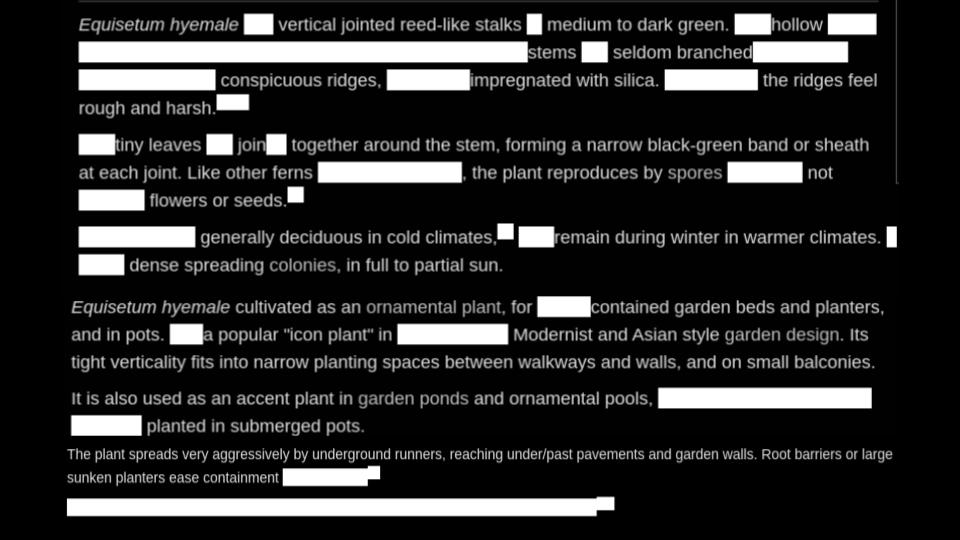
Equisetum hymale
Rough horsetail grass grows
vertical jointed reed-like stalks
of medium to dark green.
Its hollow stems seldom branch;
each stem has conspicuous ridges,
fully impregnated with silica,
which makes them feel rough
and harsh. Tiny leaves join
together around stems, forming
narrow black-green or dark bands
or sheaths at each joint. Like
other ferns, this plant reproduces
by spores, not with flowers or seeds.
Generally deciduous in cold climates,
they continue to grow during winter
in warmer climes, forming dense
spreading colonies in full to partial sun.
Equisetum hyemale can be cultivated
as an ornamental plant for contained
garden beds, planters, and in pots;
it is a popular “icon plant” in Modernist
and Asian-style garden designs. Its tight
verticality fits well into narrow planting
spaces — between walkways and walls —
as well as on small balconies. Horsetail
can also be used as an accent plant
in garden ponds and ornamental pools,
planted in submerged pots. Left alone
or untended, the plant spreads very
aggressively by underground runners,
tunneling under pavements, walkways
and garden walls. Root barriers, or large
sunken planters help ease containment.
Gathered and dried, horsetail grass stems
can also be infused as a tisane for inside
the human body, or ground and mixed
with oil for use as a poultice on the outside.
Both these forms can be highly beneficial,
soothing and healing human kidneys,
thereby gently easing many unnecessary
or uncomfortable human containments.
. . . . .
Found Poet: Susan Powers Bourne
Source: https://en.wikipedia.org/wiki/Equisetum_hyemale
Process: Redacted content | 04.01 NaPoWriMo 2021